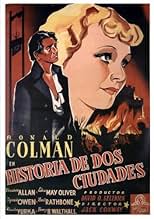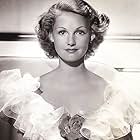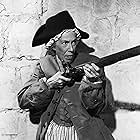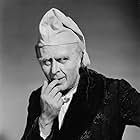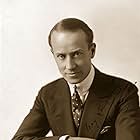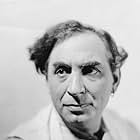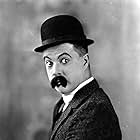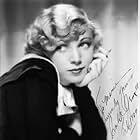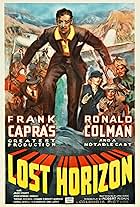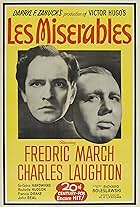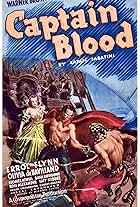IMDb RATING
7.8/10
6.5K
YOUR RATING
A pair of lookalikes, one a former French aristocrat and the other an alcoholic English lawyer, fall in love with the same woman amidst the turmoil of the French Revolution.A pair of lookalikes, one a former French aristocrat and the other an alcoholic English lawyer, fall in love with the same woman amidst the turmoil of the French Revolution.A pair of lookalikes, one a former French aristocrat and the other an alcoholic English lawyer, fall in love with the same woman amidst the turmoil of the French Revolution.
- Nominated for 2 Oscars
- 2 nominations total
Lucille La Verne
- The Vengeance
- (as Lucille LaVerne)
Storyline
Did you know
- TriviaActor Ronald Colman agreed to play the role of Sydney Carton with the sole condition that he not also be required to play the role of Charles Darnay, as was usually expected in adaptations of the Dickens novel. The plot of 'A Tale of Two Cities' turns on the physical resemblance between the two characters. Colman had long wanted to play Sydney Carton, and was even willing to shave off his beloved mustache to play the part.
- GoofsSydney Carton attends Christmas Eve services ca. 1780 during which "Hark, the Herald Angels Sing" is sung to music by Felix Mendelssohn (1809-1847), and John Francis Wade's Latin hymn, "Adeste fideles," is sung in Frederick Oakley's (1802-1880) translation as "O Come, All Ye Faithful."
- Quotes
Sydney Carton: It's a far, far better thing I do than I have ever done. It's a far, far better rest I go to than I have ever known.
- Crazy creditsAlthough the film has nothing to do with Christmas, "Adeste Fideles," known in English as the holiday carol "O Come All Ye Faithful" plays as a The End title appears on screen.
- ConnectionsEdited into The Story That Couldn't Be Printed (1939)
- SoundtracksLa Marseillaise
(1792) (uncredited)
Written by Claude Joseph Rouget de Lisle
Played during the opening credits and often in the score
Featured review
With the exception of David Copperfield this is probably Hollywood's most accomplished treatment of a Charles Dickens work. Sumptuously mounted and produced in grand MGM style it has the the perfect voice and charm of Ronald Colman as Sidney Carton, a stalwart supporting cast and magnificently choreographed large scale crowd scenes depicting the out of control energy and fury of the revolt and subsequent reign of terror.
Colman's charming cynic wins us over early given he is surrounded by just cause with a Dicken's roster of pompous bores and hypocrites caught up in their own self importance. He drinks and offends but who can blame him. The sardonic wit of the film extends beyond Carton though by way of Dickens "cinematic" descriptive style that sharply conveys through both character and setting distracting dark humor over the grim proceedings by intermingling comic portraits with the sober cruel personages while making incisive social commentary. A laudable supporting cast consisting of Reginald Owen, Edna May Oliver, Billy Bevan, Blanche Yurka's Madame DeFarge and Basil Rathbone's venal Marquis de Evermonde truly do bring the pages to life, though I will admit an Oliver, Yurka death match near the end does take liberties with the tome.
Oliver Marsh's photography is commendable throughout whether conveying panorama in the excellently edited storming of the Bastille and raucous courtroom scenes or the tight tension filled cramped ominously lit interiors of cells or the De Farge wine shop.
With Colman in the lead and every MGM department clicking on all cylinders Tale of Two Cities remains fresh and vital 75 years later. It is one of those rear films that embraces rather than wrestle with a classic literary work which it does here with grandeur and confidence.
Colman's charming cynic wins us over early given he is surrounded by just cause with a Dicken's roster of pompous bores and hypocrites caught up in their own self importance. He drinks and offends but who can blame him. The sardonic wit of the film extends beyond Carton though by way of Dickens "cinematic" descriptive style that sharply conveys through both character and setting distracting dark humor over the grim proceedings by intermingling comic portraits with the sober cruel personages while making incisive social commentary. A laudable supporting cast consisting of Reginald Owen, Edna May Oliver, Billy Bevan, Blanche Yurka's Madame DeFarge and Basil Rathbone's venal Marquis de Evermonde truly do bring the pages to life, though I will admit an Oliver, Yurka death match near the end does take liberties with the tome.
Oliver Marsh's photography is commendable throughout whether conveying panorama in the excellently edited storming of the Bastille and raucous courtroom scenes or the tight tension filled cramped ominously lit interiors of cells or the De Farge wine shop.
With Colman in the lead and every MGM department clicking on all cylinders Tale of Two Cities remains fresh and vital 75 years later. It is one of those rear films that embraces rather than wrestle with a classic literary work which it does here with grandeur and confidence.
- How long is A Tale of Two Cities?Powered by Alexa
Details
- Release date
- Country of origin
- Official sites
- Language
- Also known as
- Charles Dickens' 'A Tale of Two Cities'
- Filming locations
- Metro-Goldwyn-Mayer Studios - 10202 W. Washington Blvd., Culver City, California, USA(Studio, Waterfront Street)
- Production company
- See more company credits at IMDbPro
Box office
- Budget
- $1,232,000 (estimated)
- Runtime2 hours 8 minutes
- Color
- Aspect ratio
- 1.37 : 1
Contribute to this page
Suggest an edit or add missing content









